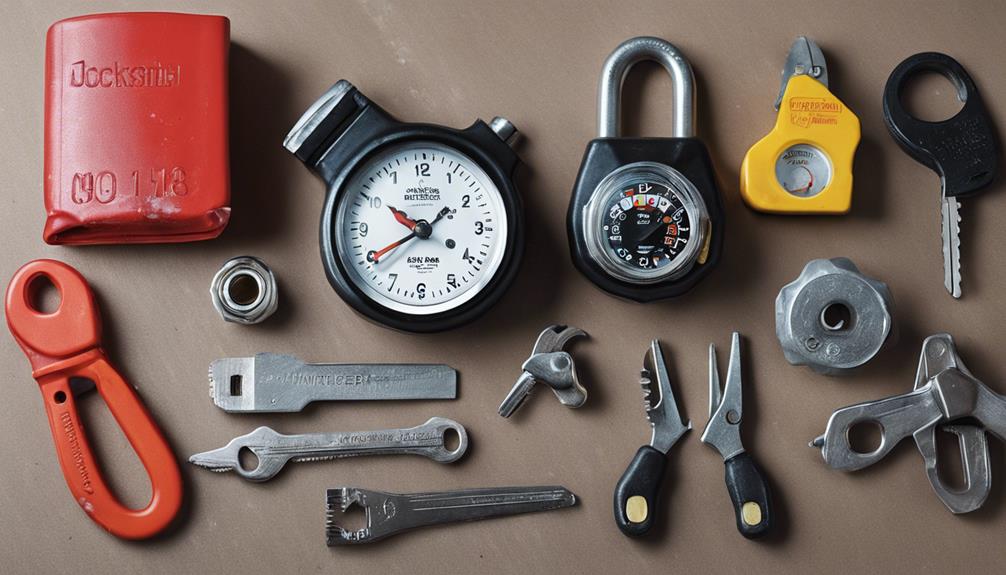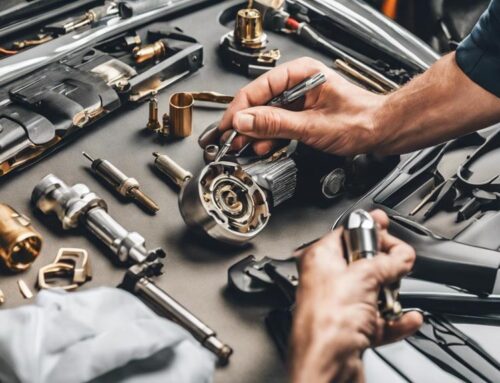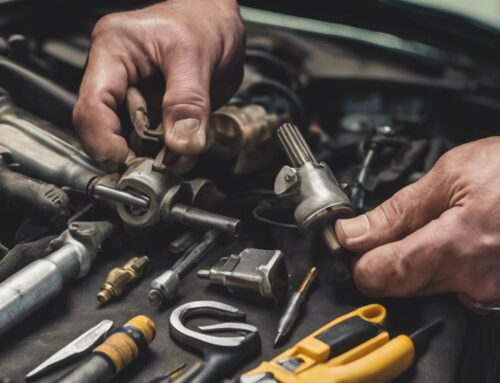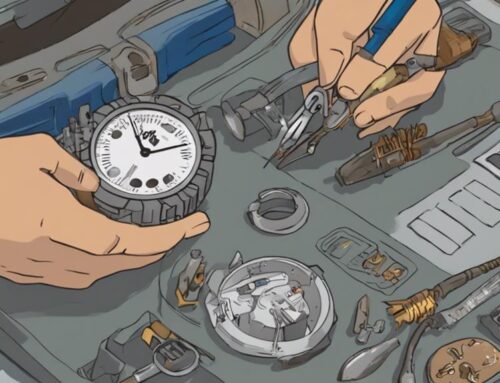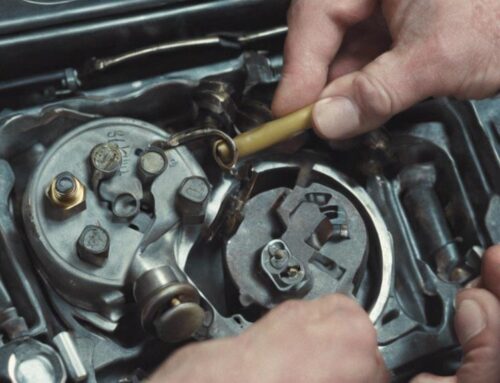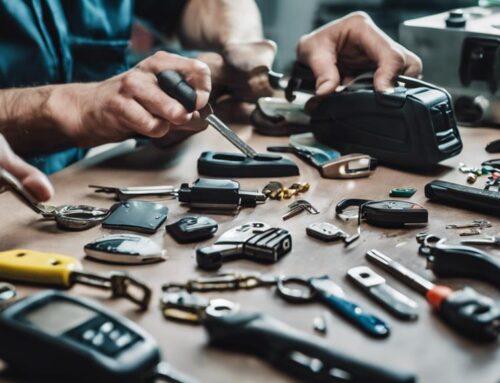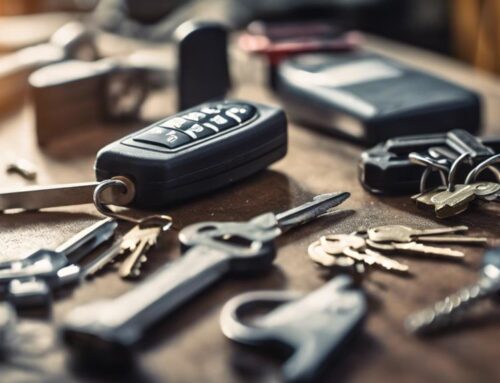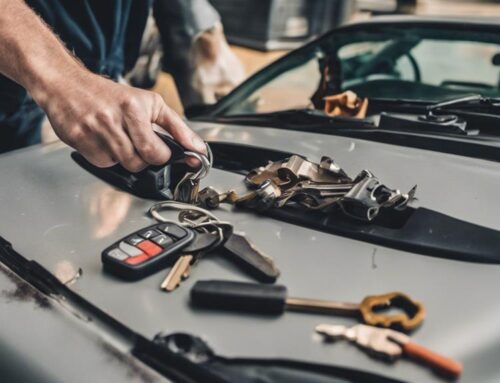When you're considering a commercial lock maintenance program, it's crucial to understand the factors that influence costs, like lock technology and service frequency. You'll want to evaluate your specific needs to set up regular service intervals effectively. For instance, high-traffic areas may require more frequent check-ups compared to quieter zones. By establishing a tailored maintenance schedule, you can enhance security and prolong the lifespan of your locks. But what are the specific costs you should expect, and how do you make sure you're not overspending on unnecessary services?
Key Takeaways
- Cost Factors: Maintenance costs vary based on lock technology, required services, and environmental influences; expect to budget for both inspections and repairs.
- Service Intervals: Schedule regular maintenance every six months, with quarterly checks for high-traffic areas to ensure optimal performance.
- Maintenance Checklist: Create a checklist outlining specific tasks for each lock type, including inspections, lubrication, and repairs to streamline the process.
- Documentation Tracking: Maintain records of inspections and repairs to identify patterns, improve scheduling, and support compliance with industry regulations.
- Professional Services: Consider hiring skilled locksmiths for efficient service; their expertise can ultimately save money and enhance security through proactive maintenance.
Factors Influencing Maintenance Costs

Understanding the factors influencing maintenance costs is essential for effective budget planning. First, consider the lock technology employed in your facility. Advanced systems, while more secure, often require specialized maintenance, impacting overall costs. Conducting a thorough cost analysis helps you identify specific needs based on the complexity and type of locks used. Additionally, the frequency of service intervals directly influences expenses; more frequent maintenance may mitigate costly repairs in the long run. Environmental factors, such as humidity and exposure to elements, can also affect lock durability, necessitating more frequent upkeep. Skilled professionals might charge higher rates, but their efficiency can ultimately save you money. Prioritize these factors to create a robust maintenance strategy.
Types of Commercial Lock Services
Exploring the various types of commercial lock services available can help you make informed decisions about your facility's security. You'll encounter essential lock repair techniques that address issues like misalignment, broken keys, or malfunctioning mechanisms, ensuring your locks operate smoothly. Additionally, consider security upgrade options such as high-security locks, electronic access controls, and master key systems, which enhance your overall security posture. Regular maintenance services, including inspections and lubrication, can prolong the life of your locks and prevent costly emergencies. By understanding these services, you can strategically invest in your facility's safety, ensuring robust protection against unauthorized access while optimizing operational efficiency. Remember, effective lock management is vital in safeguarding your assets and maintaining peace of mind. Learn more about essential lock maintenance for business security to enhance your security strategy.
Frequency of Service Intervals
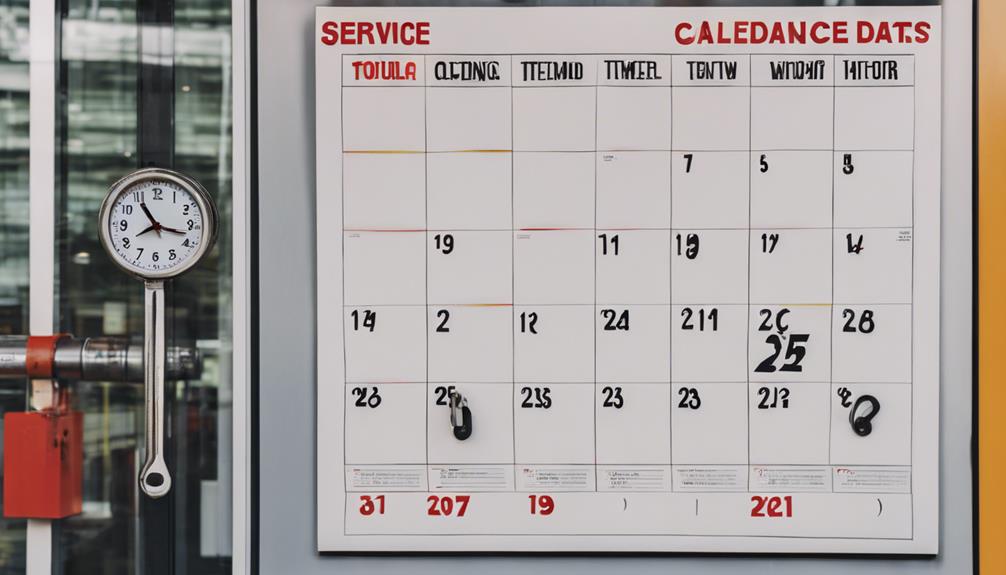
Understanding the frequency of service intervals for commercial locks is essential for maintaining security and functionality. Regular cleaning and lubrication are key components of lock maintenance Essential Maintenance Tips to Prevent Lockouts and Repairs, helping to prevent issues that could lead to costly repairs or lockouts. You'll want to take into account recommended service frequencies, seasonal maintenance needs, and the specific requirements of different lock types. Each factor plays a significant role in ensuring your locks operate effectively and reduce the risk of malfunctions.
Recommended Service Frequency
When it comes to maintaining commercial locks, setting a recommended service frequency is essential for ensuring ideal security and functionality. Typically, a thorough inspection and maintenance should occur every six months. This frequency allows you to implement preventive measures that can avert costly repairs and security breaches. However, consider your specific environment; high-traffic areas may require quarterly checks to address wear and tear. Performing a cost analysis can help you determine the most efficient intervals, balancing service costs against potential losses from security failures. Ultimately, establishing a regular service schedule not only enhances the longevity of your locks but also reinforces your commitment to maintaining a secure environment for your business.
Seasonal Maintenance Considerations
Considering the impact of seasonal changes on commercial lock performance is essential for maintaining ideal security and functionality. Different climates can exacerbate seasonal wear, affecting lock mechanisms and materials. In humid environments, moisture may lead to rust, while extreme cold can cause metal components to contract, hindering operation. To counteract these climate impacts, you should establish a regular maintenance schedule that aligns with seasonal shifts. Inspect locks quarterly during winter and summer, and biannually in spring and fall to guarantee all components function smoothly. This proactive approach minimizes potential issues and prolongs the life of your locks, ultimately safeguarding your premises. Additionally, integrating Affordable Nationwide Installation of Commercial Exit Devices and Panic Bars can enhance overall security measures in your commercial space. Don't underestimate the importance of adapting your maintenance frequency to address the specific challenges posed by seasonal variations.
Lock Type Variations
Seasonal maintenance isn't just about timing; it also involves recognizing the specific requirements of different lock types. Electronic locks and keyless entry systems, for instance, require more frequent servicing compared to traditional locks. These advanced systems rely on electronic components and batteries that can degrade over time, making a quarterly maintenance schedule advisable. Conversely, standard mechanical locks may only need biannual inspections, focusing on lubrication and alignment. Additionally, it is crucial to follow vital care tips for keyless entry systems to guarantee their longevity and security Vital Care Tips for Keyless Entry Systems.
Understanding these variations allows you to implement a tailored maintenance program that guarantees superior security and functionality. By prioritizing the unique needs of each lock type, you can prevent costly malfunctions and enhance the longevity of your locking systems. Regular evaluations and timely interventions are key to maintaining robust security across your facilities.
Setting Up a Maintenance Schedule
Establishing a maintenance schedule for commercial locks is essential to guarantee their longevity and reliable performance. Start by creating a maintenance checklist that outlines the specific tasks required for each lock type. Include inspections, lubrication, and adjustments as necessary. Determine service intervals based on usage and environmental factors—monthly, quarterly, or biannual schedules may suit different facilities. Implement service reminders to alert your team when maintenance is due. This proactive approach minimizes potential issues and enhances security. Document each maintenance session to track performance and identify patterns over time. By following these steps, you empower your organization to maintain peak lock functionality, reduce repair costs, and guarantee a secure environment for your operations.
Benefits of Regular Maintenance
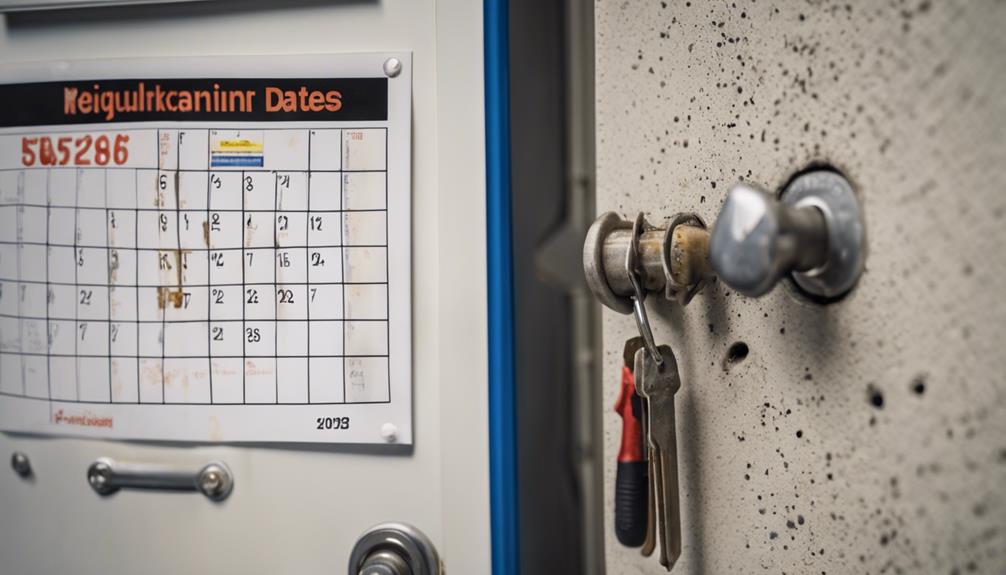
Regular maintenance of commercial locks offers numerous advantages that go beyond just ensuring their functionality. By implementing a routine maintenance program, you not only enhance security but also achieve significant cost savings over time. Regular checks prevent minor issues from escalating into costly repairs or replacements.
| Benefit | Description | Impact |
|---|---|---|
| Security Enhancement | Regular inspections identify vulnerabilities | Enhanced safety |
| Cost Savings | Preventative measures reduce repair costs | Budget-friendly |
| Increased Reliability | Consistent performance of locks | Peace of mind |
| Extended Lifespan | Maintenance prolongs lock life | Long-term investment |
| Compliance Assurance | Meets industry regulations | Avoid penalties |
This structured approach empowers you to maintain peak security for your commercial premises.
Low Rate Locksmith's Mobile Services
Low Rate Locksmith offers a variety of mobile services designed to meet your commercial security needs promptly and efficiently. Whether you're facing unexpected lockouts or require emergency repairs, our skilled technicians are equipped to handle any situation on-site. We recognize the urgency of security issues, which is why we prioritize rapid response times to guarantee your business remains protected. Our emergency rekeying services minimize downtime and respond swiftly to security breaches, providing cost-effective solutions to maintain high security standards without new hardware installations.
In addition to emergency repairs, we specialize in security upgrades, providing tailored solutions that enhance your facility's safety. Our mobile services include lock installations, rekeying, and access control systems, all designed to fortify your premises against potential threats. By choosing our mobile services, you empower your business with robust security measures and the peace of mind it deserves.

